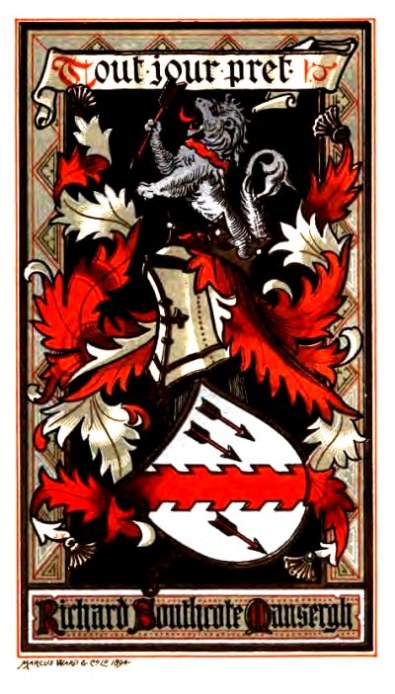ON THE PROCESSES FOR
THE PRODUCTION OF
EX LIBRIS
(BOOK-PLATES)
By John Vinycomb, M.R.I.A.
Fellow of the Royal Society of Antiquaries of Ireland
President of the Belfast Art Society, 1891-92
Member of Council of the Ex Libris Society
Reprinted from the Journal of the Ex Libris Society
with additional illustrations.

LONDON:
A. & C. BLACK, Soho Square
1894
TO
ARTHUR VICARS, F.S.A.,
ULSTER KING OF ARMS
A VICE-PRESIDENT OF THE EX LIBRIS SOCIETY
AND AN EMINENT COLLECTOR
I RESPECTFULLY DEDICATE
THIS LITTLE BOOK.
PREFACE.
In acceding to the author’s request that I would add a few words ofintroduction to these reprinted articles, I do so with pleasure,although entering a mild protest thereon, inasmuch as the writer hashandled his subject so well that it leaves very little to say, exceptin commendation of the work to the favourable consideration of thosefor whom it was written.
Mr. Vinycomb has in these articles aimed to give his readers apractical dissertation upon the modes of execution, rather thanupon the history and classification of styles in the production ofbook-plates; and in this he has certainly departed from the beatentrack, and has furnished a very concise and clear account of thevarious processes by which our book-plates are produced and reproduced,and the numerous and ingenious methods of manipulation resorted to intheir manufacture.
Some people may take exception to the word manufacture, used in thisconnection, as being inappropriate to a description of what may bedefined as one of the modern arts. But the terms, though by no meanssynonymous, are at any rate akin; for doubtless the majority ofbook-plates are artistically designed, but for their reproduction andfinal manipulation the aid of science must be resorted to.[Pg vi]
Mr. Vinycomb, in his opening remarks, says: “The production ofbook-plates, by whatever means, is but a side branch of the artby which pictorial and decorative illustrations of every kind areexecuted, and copies multiplied by some of the ordinary processes ofprinting.” He then tells us that whereas in former times wood engravingand copper engraving were responsible for most of the book-platesexisting, “the advance of modern science has, however, changed allthat, and we may now possess a charming book-plate, which is neith

